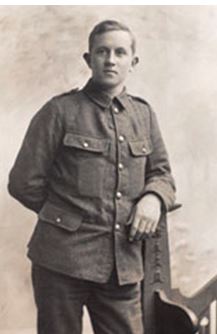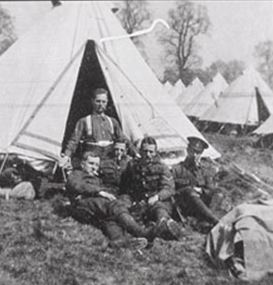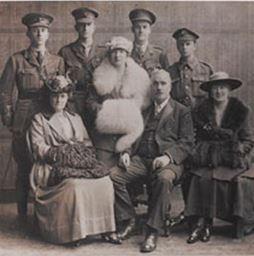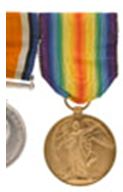Fascinating insight shared by National Army Museum
|
Extracts from the pocket diary of a World War 1 soldier who lived in West Ealing have been posted online for the first time.
The entries from January 1915 belong to Rifleman William Eve whose address (in 1911) had been 3 Highworth Gardens, Midhurst Road.
They record dramatic artillery exchanges and sniper fire against a backdrop of rain and cold as the men of the British Expeditionary Forces faced their first winter on the front line.
Rifleman Eve’s diary is revealed for the first time this week on the National Army Museum’s website.
One entry notes that it poured with rain all day and all night. He writes: “Dropped blanket and fur coat in the water. Slipped down as getting up parapet, got soaked up to waist.” The entry continues: “Had no dug out to sleep in, so had to chop and change about”.
The harsh winters of World War One caused enormous suffering amongst soldiers, but no matter how cold or wet they were required to remain on the front line.
The trenches quickly turned into bitterly cold mud baths, sometimes up to waist deep. It was impossible for the men to stay dry and many suffered ‘trench foot’, a condition often leading to gangrene and amputation.
Rifleman Eve’s diary tells how he himself was “paraded sick with feet”, though not before seeing considerable action.
A few days before recording his sickness, a response to heavy shelling from the Germans is noted:
“Excellent firing, the brewery being shattered, saw chimney fall. Snipers shot … before going through the officers’ hut, missing them by about a foot. The best bit of fun we’ve had”.
Describing exchanges of gun-fire so lightly compounds the sadness of the conditions that the Rifleman must have endured. He survived the War.
Eve’s later entries for January 1915 record more friendly encounters with people he met when he was out of the front line, including warm hospitality from local people in France.
His journey back to England via Boulogne and finally on a hospital train, is also noted.
Eve, who had been born the son of a silversmith in Clapham, London in 1894 went on to recover from trench foot and continued to serve his country, achieving two promotions.
Following the War he settled in Middlesex and later married and lived in Surrey where he died in 1981.
His full story appears alongside his diary entries in the Soldiers’ Stories series on the NAM's commemorative portal, First World War in Focus.
These personal accounts are being unveiled month-by-month and piece together the development of the war from the point of view of those directly involved – one hundred years from the time that they describe. The Museum hopes that in sharing these personal stories, the human scale and impact of ‘The Great War’ can be better felt and understood.
Also on the portal is an interactive global map that geotags all the major events of the war, a timeline to help users piece together the development of the conflict and a host of learning tools. The website is a unique resource that will help commit the events of one hundred years ago to the country's national memory in one central place.
First World War in Focus is part of the National Army Museum’s Building for the Future* project, which is supported by an £11.5m grant from the Heritage Lottery Fund.
The project will see the transformation of the Museum’s Chelsea site as well as a programme of community projects, together with Regimental Museum collaborations, travelling exhibitions, loans and expert support.
Support from the Heritage Lottery Fund has also enabled the Museum to go on the road during its closure period, with a series of nationwide events around the country to commemorate the First World War and the bi-centenary of the Battle of Waterloo in 2015.
Visit First World War in Focus at www.nam.ac.uk/first-world-war.
28th January 2015




